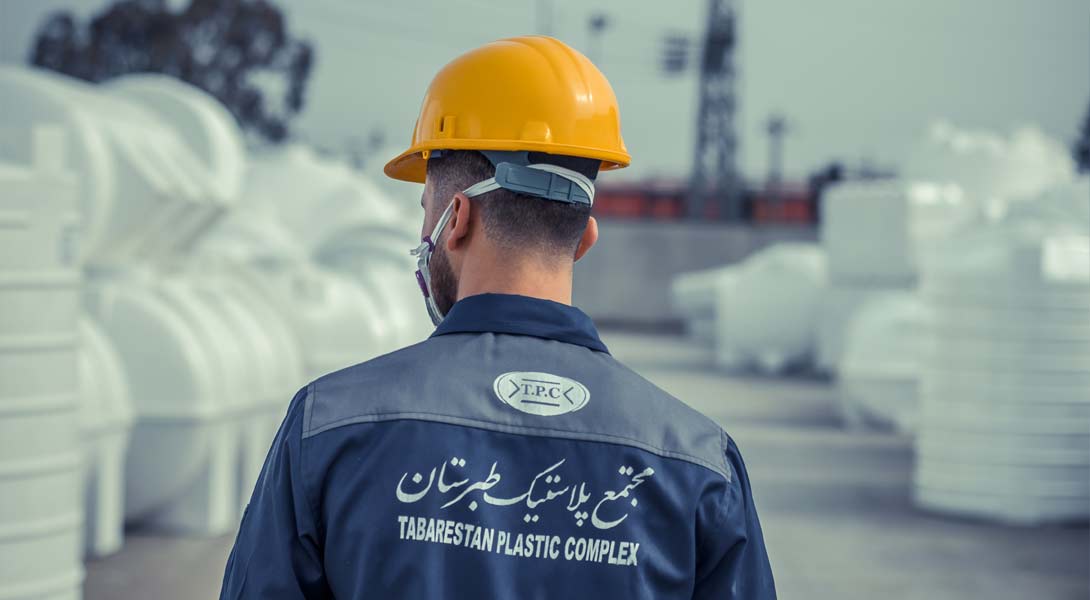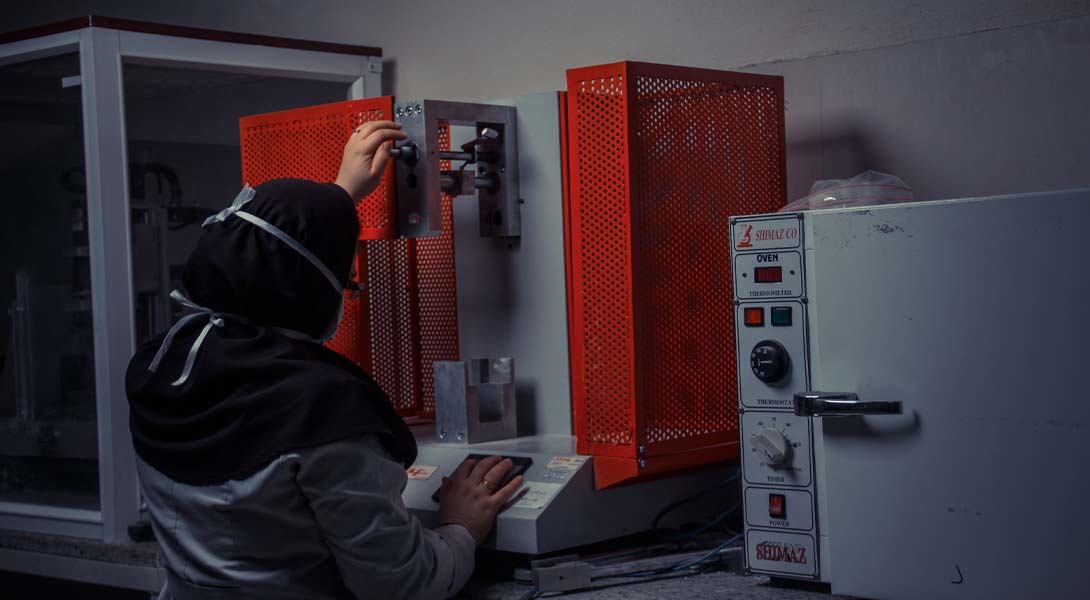One of the concerns of the people living in apartments and dense urban areas is low water pressure and frequent water outages in some seasons of the year. Water outages have reasons such as the significant reduction of underground water resupplys and the inability to supply water to residential areas, creation of breakages and damage in water supply lines due to the weakness and oldness of the lines and the non-standard plumbing of buildings.
Water Tank
One of the concerns of the people living in apartments and dense urban areas is low water pressure and frequent water outages in some seasons of the year. Water outages have reasons such as the significant reduction of underground water supplies and the inability to supply water to residential areas, creation of breakages and damage in water supply lines due to the weakness and oldness of the lines and the non-standard plumbing of buildings. The correct and principled solution to this problem is only to install a polyethylene tank for the building. Water supply (reservoir) Installation can be a problem-solver in emergency situations, when electricity and water are cut off, as well as during the peak water consumption, when the water pressure is accompanied by a large decrease.
Why is the Water Tanker Installation Method Important?
As mentioned, the water tanker or tank is very useful to compensate for the shortages and to solve the problems related to water in the building. It is very important to pay attention to the sensitivity and how to install the polyethylene tank in this section. The polyethylene tanks must be installed in the right place and position due to their plastic material. Otherwise, if they are not installed in a principled way, then these tanks will be damaged and broken, and you will have to pay a high price to repair them.

Suitable Positions to Install a Household Water Tanker
You should pay attention to the type of use, urban area, available space, and number of people living in the building to install a household water tanker, or in other words, water tanks. The water tank can be installed below stair, powerhouse, parking lot, storage room and on the roof. In this regard, please note that the supplies, which are installed on the ground or negative floor of the building, will definitely need a pump but sometimes, when installing a water tank on the roof, they enable the possibility of not using a pump, avoiding spending extra money and reducing the annoying noise of water pumps. Placing the water supply on the roof makes the required water pressure of the building to be provided only by using the force of gravity or earth's gravity. This method of the water tank installation on the roof has made the required water pressure of the building to be provided during the power outage. Next, we will deal with how to install a water tank on the roof without a pump.
One of the most important concerns of people in urban communities is access to water during the water and power outages. The importance of using building water supplies becomes apparent in such situations. Polyethylene tanks can be installed on the roof, negative and ground floors, each of which has its own advantages.
Important Points in Water Tank Installation on the Roof
There are some points to keep in mind to install a water supply on the roof because if you do not pay attention to these points, you will witness a decrease in efficiency and damage to the supplies, which will cause you to incur high costs.
Roof ability to tolerate the water supply weight
The first step to purchase and install a water tank on the roof is to check the roof. Roofs generally can tolerate 400 to 500 kg per square meter. This weight tolerance is considered in order to predict the probability of snowfall. It is also possible to draw a chassis and distribute the water supply weight on the roof surface to use large and bulky water supplies. On the other hand, it is also possible to use several smaller water supplies instead of one large water supply. Both the chassis (frame straightening) cost is saved and it is easier to transfer the tanks to the roof by using several small water tanks. At the end of this section, it should be noted that the best places to install the water tank are on the parts that have pillars or the pillars density in that place is higher than the others (such as a barn).
Tip: It is better to consult with a structural engineer or specialist first to avoid possible risks in order to install a water supply on the roof.
Urban Water Pressure
One of the main applications of water tanks is to compensate for the low pressure of urban water but the filling of the tanks itself also depends on the water pressure, which is provided through the urban piping. Two modes can be predicted at this stage.
The water pressure is always low in the first mode. The tank installation on the roof is not a good option in this mode and it is better to install these tanks in the parking lot, warehouse, or in other words, the negative and ground floors. Of course, a small and low-volume supply should be allocated along with a water pump in order to fill the roof water tank if there is no suitable space in the building to be allocated to the water supply and the only available space is the roof.
In the second mode, we imagine that the water does not reach the supply only during peak consumption hours, or during certain hours of the day or night. This problem can be solved only by increasing the water volume on the roof in this mode. For example, 100 liters of water can be allocated per person. With this plan, you won't have any problems when the water pressure drops.
Tank Installation on the Roof
One of the most challenging steps is how to transfer the tank to the roof. The small size of the staircase, the entrance door of the building, and the roof are troublesome for transferring the water supply. The water supply must be moved to the roof using a rope and lift or a crane in this situation.

The water tank installation method on the roof is not easy, and some basic points should be taken into account. First of all, the appropriate location and the supply installation on the roof must be determined, and then the things such as the urban water pressure in order to fill the tank and how to transfer the tank to the roof must be checked.
Advantages of Water Tank Installation on the Roof without a Pump
We mentioned earlier, the water tank installation on the roof without a pump has more advantages than the tank installation along with a pump in places other than the roof. These advantages include the following, which will be addresses in brief.
No need for electricity
One of the major problems in urban areas is power outage along with water outage. Additionally, it is not possible to use electricity in emergency situations and this will cause the water supply system to fail and consequently, the water will be cut off again if there is a water pump. With this method and in a mode where there is no need for a water pump, water will be supplied with the building units using gravity.
Additional noise reduction
Noise pollution caused by water pump operation in residential environments can be very annoying. There will be no more noise problem in this method.
Building Beauty
The building face is no longer messed up and you will not witness the water supply in the building’s ground and negative floors, which have significant traffic, by using the water supply on the roof.
Reduction in costs
By filling the tank during the hours when the water has a suitable pressure and using it during peak consumption times, you will not pay for the electricity required by the pump as well as the high cost of water pumps.
Some important tips for water tank installation on the roof
Please note that the tanks’ lids must be completely closed.
Do not place heavy objects on the tanks at all.
Polyethylene tanks can be punctured, so avoid contact with sharp objects.
Always try to keep the tanks as clean as possible.
Install an air valve on the tanks body so that there is no need for sealing and air sealing, and it also prevents the tanks from bursting.
Do not use objects in any way in order to level and balance the tank and try to install correct and principled priming (flooring) for the tanks.
Use three-layer tanks if the tank is located in a place that is close to direct or indirect light. In addition, try to keep the tanks away from the sun, wind, and rain as much as possible.
Note that the float valve inside the tanker must be connected above it.
Try to use soft fittings for plumbing the supplies to prevent the water leakage.
If possible, try to use a suitable base to install the water tank to prevent the tank from sinking into the bituminous waterproofing or the roof texture.
If you use a pump, use a shock absorber so that the vibration caused by the pump does not damage the fittings.
Note that each facilities engineer may have their own unique method for piping the water tank on the roof.
Water tank installation on the roof has many advantages, which include reducing costs, maintaining the building beauty, and not needing the electricity. Also, some points should be paid attention to for high efficiency and maximum use of the efficiency of water tanks. Failure to comply with these points will damage the supplies and their failure.
Water Tank Purchase from "Tabarestan Plastic Complex"
Tabarestan Plastic Complex is one of the largest producers of polyethylene tanks in the country and has a significant share of the market due to the high quality of its productions. All the tanks produced in the complex are of guaranteed quality. You can contact the specialists of the complex to place the order and learn about the price of spray, horizontal, funnel, under-stair, Nissan, vertical, IBC, chlorination, septic, oval, expansion, Doorway, and cubic tanks. If you are planning to buy the best brand of polyethylene water tanker or tank, be sure to read this article.
Final Word
Water supply Installation on the roof allows you to get rid of frequent water outages and low urban water pressure, and you can easily access water in emergency situations. It is better to carefully study the points mentioned in this article in order to properly install the supply in the building and implement them in practice so that you can use the maximum capacity of the tanks’ efficiency.


 فارسی
فارسی English
English عربي
عربي کوردی
کوردی
User comments